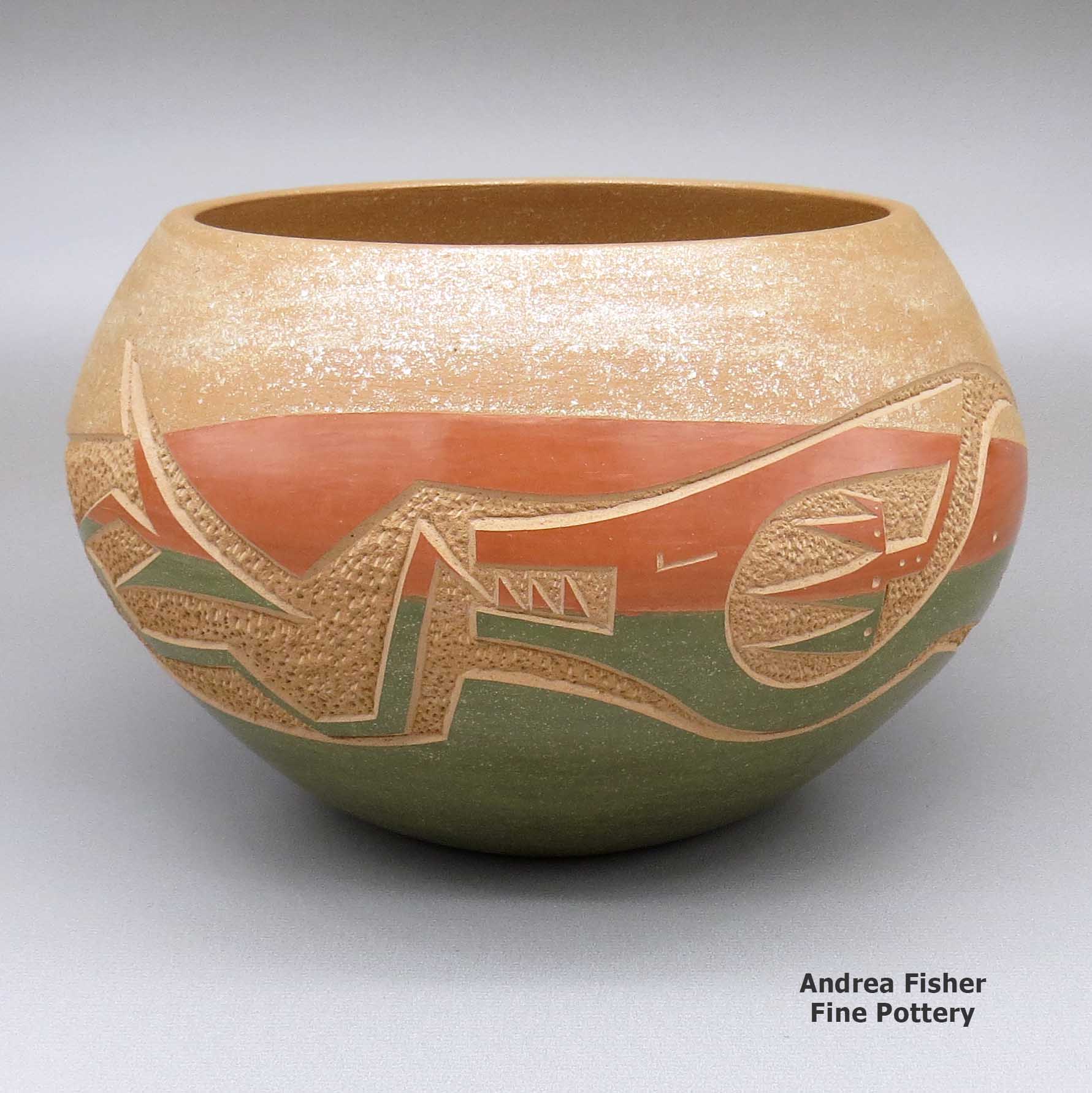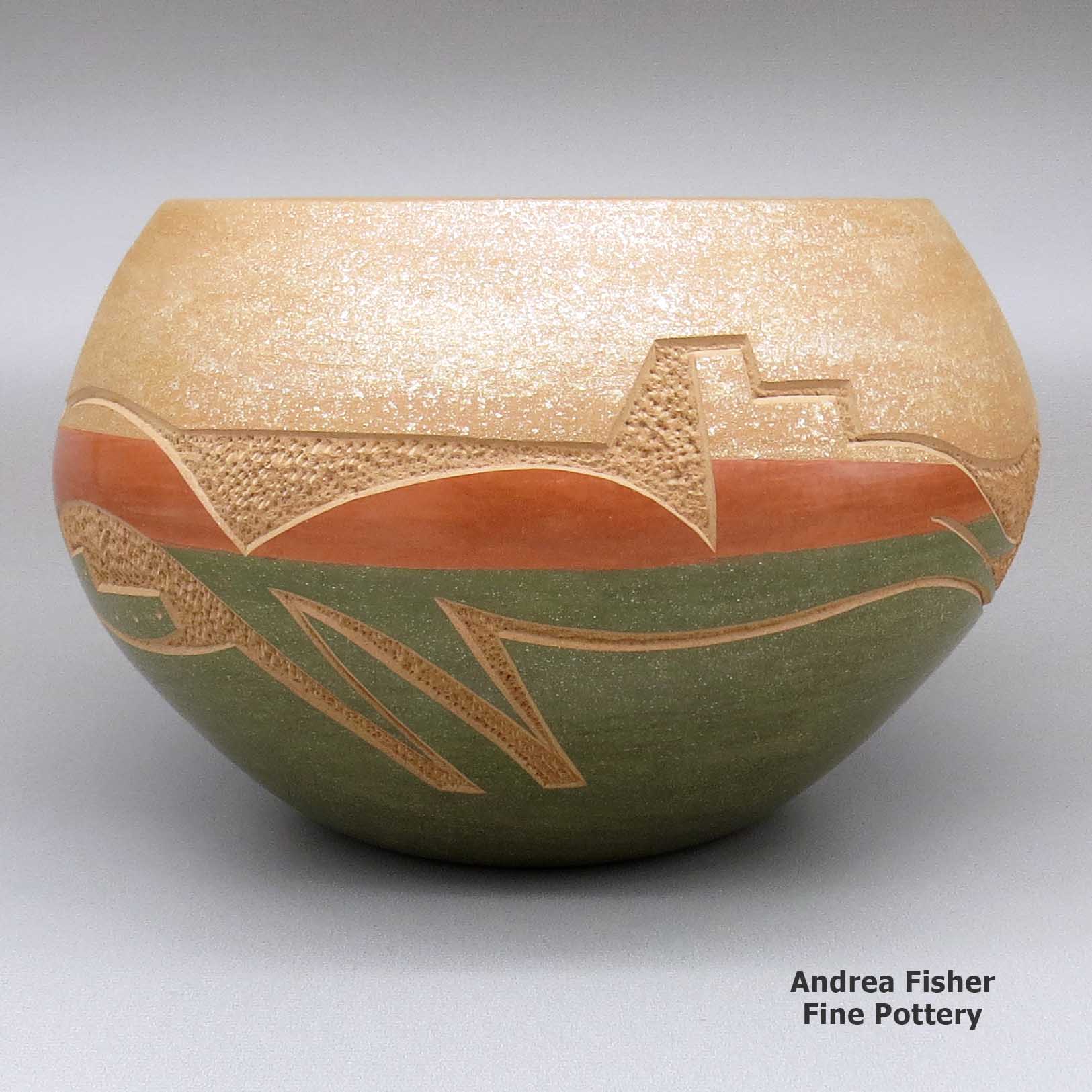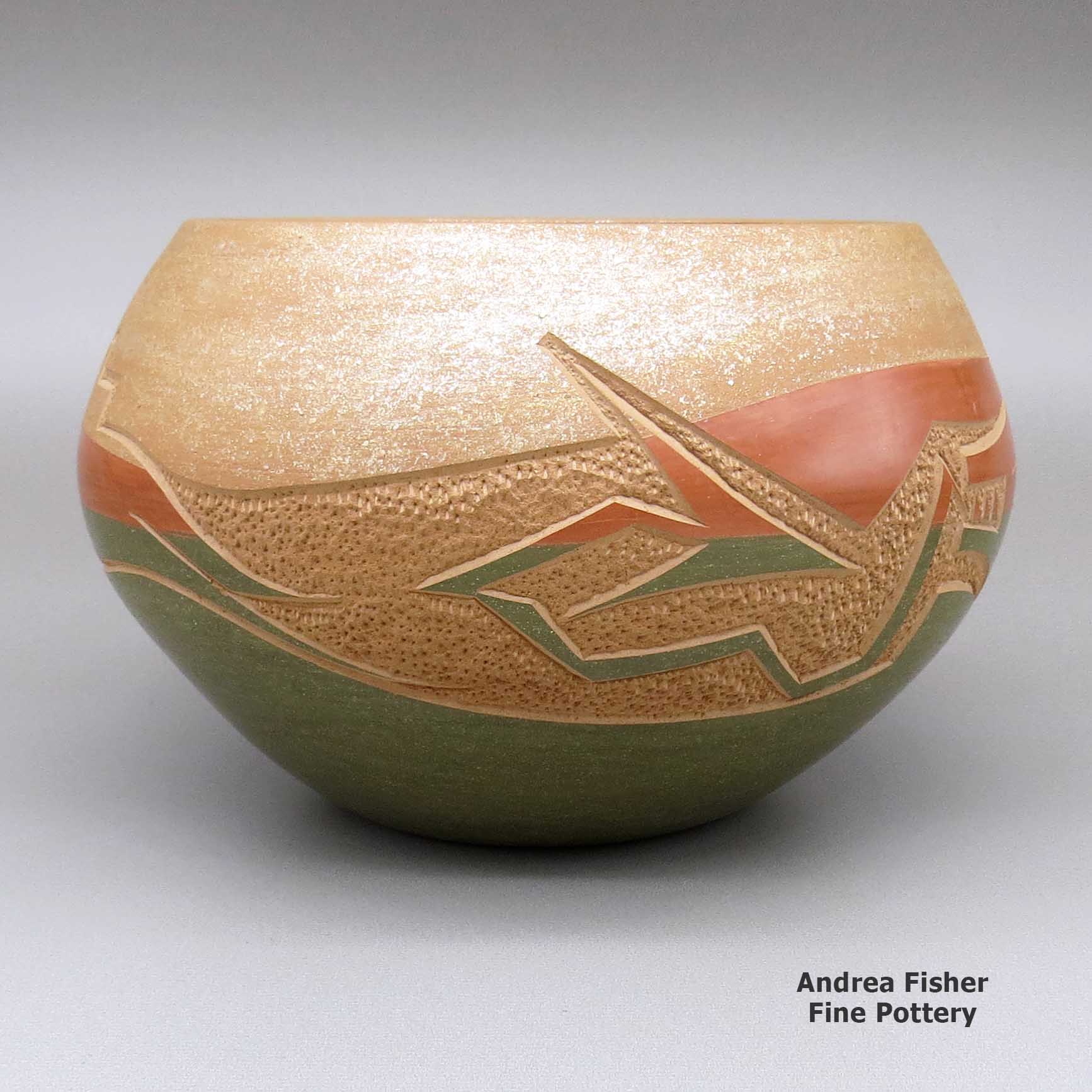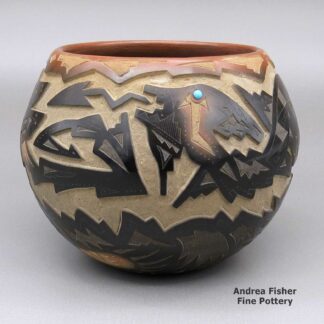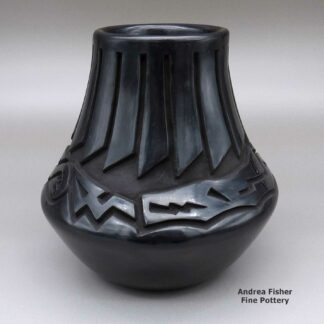| Dimensions | 8 × 8 × 5.25 in |
|---|---|
| Condition of Piece | Very good |
| Signature | TS |
Jennifer Tse Pe, jhsi3b166, Jar with sgraffito avanyu design
$950.00
A polychrome jar decorated with a sgraffito avanyu design filled with micaceous slip details
In stock
Brand
Tse Pe, Jennifer
A Short History of San Ildefonso Pueblo
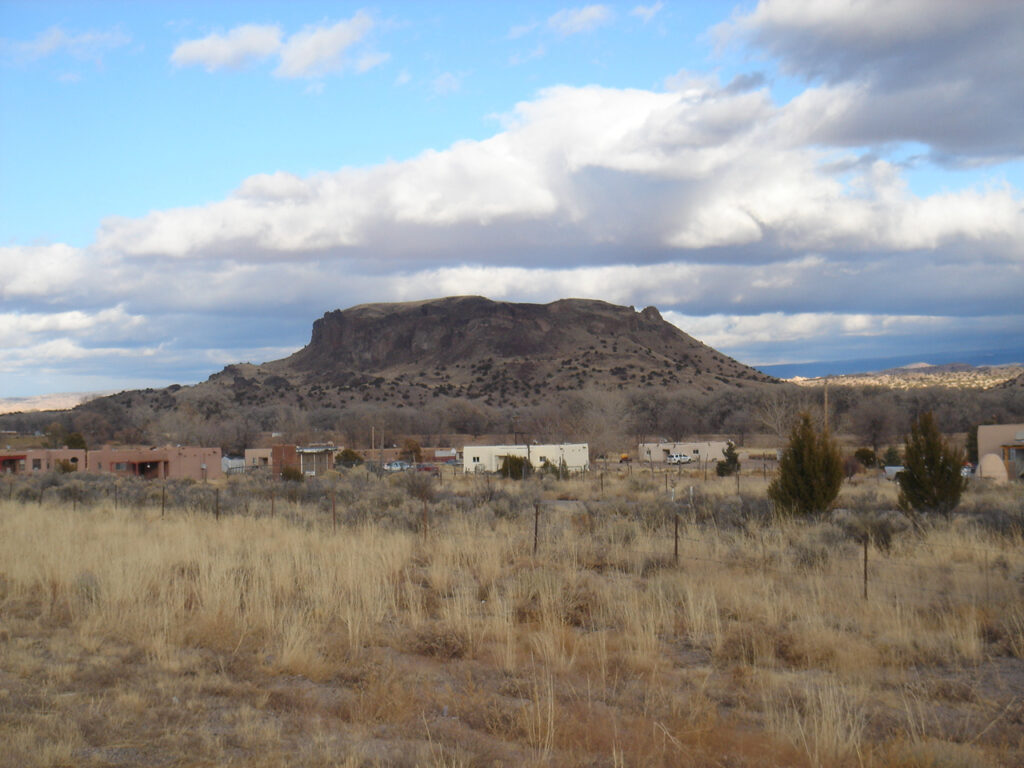
San Ildefonso Pueblo is located about twenty miles northwest of Santa Fe, New Mexico, mostly on the eastern bank of the Rio Grande. Although their ancestry has been traced as far back as abandoned pueblos in the Mesa Verde area in southwestern Colorado, the most recent ancestral home of the people of San Ildefonso is in the area of Bandelier National Monument, the prehistoric village of Tsankawi in particular. The area of Tsankawi abuts today's reservation on its northwest side.
The San Ildefonso name was given to the village in 1617 when a mission church was established. Before then the village was called Powhoge, "where the water cuts through" (in Tewa). The village is at the northern end of the deep and narrow White Rock Canyon of the Rio Grande. Today's pueblo was established as long ago as the 1300s and when the Spanish arrived in 1540 they estimated the village population at about 2,000.
That first village mission was destroyed during the Pueblo Revolt of 1680 and when Don Diego de Vargas returned to reclaim the San Ildefonso area in 1694, he found virtually the entire tribe on top of nearby Black Mesa, along with almost all of the Northern Tewas from the various pueblos in Tewa Basin. After an extended siege, the Tewas and the Spanish negotiated a treaty and the people returned to their villages. However, the next 250 years were not good for any of them.
The Spanish swine flu pandemic of 1918 reduced San Ildefonso's population to about 90. The tribe's population has increased to more than 600 today but the only economic activity available for most on the pueblo involves the creation of art in one form or another. The only other jobs are off-pueblo. San Ildefonso's population is small compared to neighboring Santa Clara Pueblo, but the pueblo maintains its own religious traditions and ceremonial feast days.

Photo is in the public domain
About Jars
The jar is a basic utilitarian shape, a container generally for cooking food, storing grain or for carrying and storing water. The jar's outer surface is a canvas where potters have been expressing their religious visions and stories for centuries.
In Sinagua pueblos (in northern Arizona), the people made very large jars and buried them up to their openings in the floors of the hidden-most rooms in their pueblo. They kept those jars filled with water but also kept smaller jars of meat and other perishables inside those jars in the water. It's a form of refrigeration still in use among indigenous people around the world.
Where bowls tend to be low, wide and with large openings, jars tend to be more globular: taller, less wide and with smaller openings.
For a potter looking at decorating her piece, bowls are often decorated inside and out while most jars are decorated only on the outside. Jars have a natural continuity to their design surface where bowls have a natural break at the rim, effectively yielding two design surfaces on which separate or complimentary stories can be told.
Before the mid-1800s, storage jars tended to be quite large. Cooking jars and water jars varied in size depending on how many people they were designed to serve. Then came American traders with enameled metal cookware, ceramic dishes and metal eating utensils...Some pueblos embraced those traders immediately while others took several generations to let them and their innovations in. Either way, opening those doors led to the virtual collapse of utilitarian pottery-making in most pueblos by the early 1900s.
In the 1920s there was a marked shift away from the machinations of individual traders and more toward marketing Native American pottery as an artform. Maria Martinez was becoming known through her exhibitions at various major industrial fairs around the country and Nampeyo of Hano was demonstrating her art for the Fred Harvey Company at the Grand Canyon. The first few years of the Santa Fe Indian Market helped to solidify that movement and propel it forward. It took another couple generations of artists to open other venues for their art across the country and turn Native American art into the phenomenon it has become.
Today's jars are artwork, not at all for utilitarian purposes, and their shapes, sizes and decorations have evolved to reflect that shift.
About the Avanyu
The avanyu is a mythical water creature likened to the feathered and plumed serpents of Mesoamerica. The design is primarily part of the design palette of Tewa potters from the Tewa Basin, and even there it varies by pueblo and artist. Wherever the artist is, the avanyu design generally represents the spirit of water rushing through a village after a downpour. The avanyu is also seen as the Keeper of Springs and Guardian of Water. The image is a prayer for rain with the realization of what a downpour can do when it falls on the hard soil of the arid and semi-arid Southwestern deserts.
Artists from San Ildefonso Pueblo generally use an avanyu design with a three-plumed head while Santa Clara Pueblo potters generally use an avanyu with three feathers hanging off the head. The avanyu always has a forked tongue, signifying the lightning bolts that herald its arrival. Some have simplified the design to one feather or plume while others have stylized the design and almost made it cubic or Oriental in design and layout.
Hopi-Tewa potters generally use a somewhat similar Hopi version of a flying, feathered serpent named kwataka. The Zuni version is Kolowisi, although it has been determined that the power of Kolowisi is too much for anyone who is not of Zuni descent so depictions of it have gotten almost as rare as depictions of kwataka.
